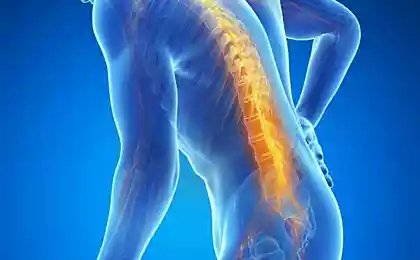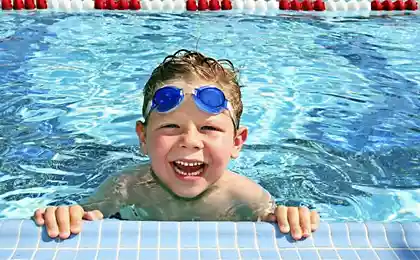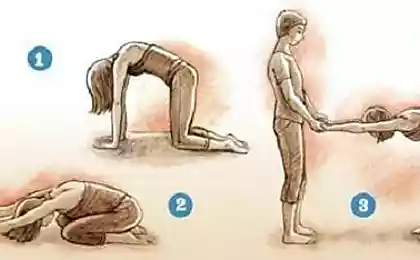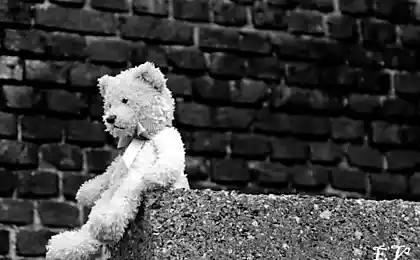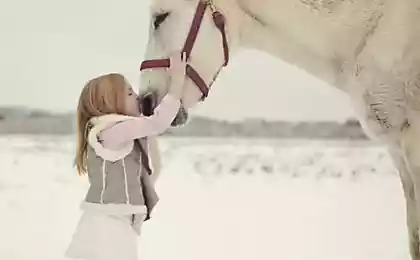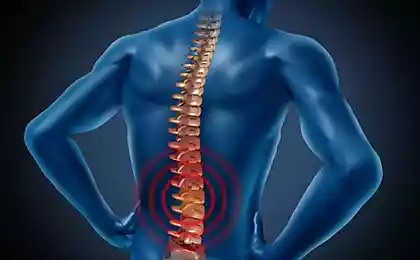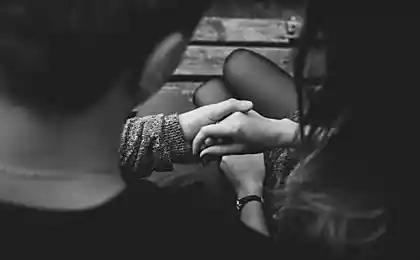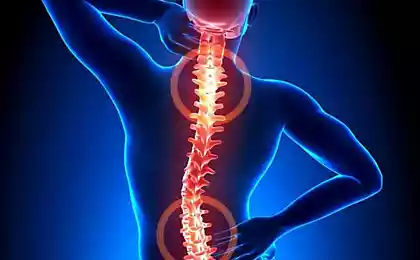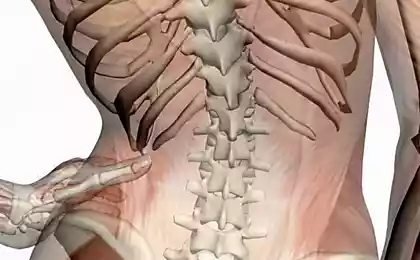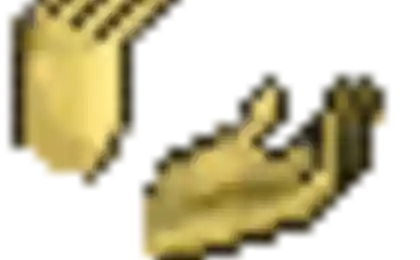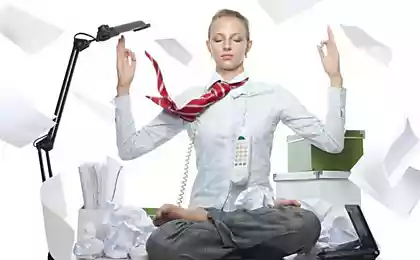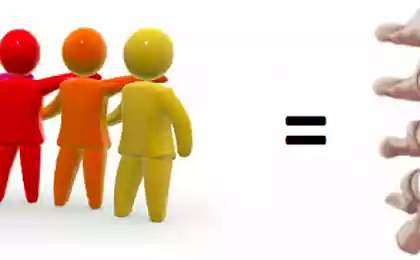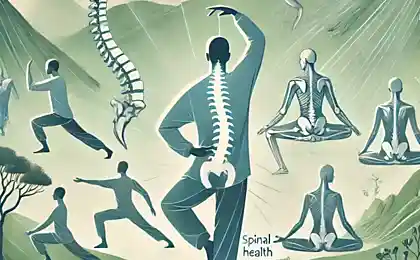597
Prevention of scoliosis, lordosis and kyphosis
Thirty eight million six hundred seventy seven thousand twenty four
The theme of the curvature of the spine is very extensive. About scoliosis – lateral curvature – we have said in the last three issues of the journal, but in addition, there are kyphosis and lordosis in which the spine excessively or in the wrong Department is bent backward or forward. All these pathological curvature entail the development of other diseases of the spine and often mutilated figure, which leads to defects in the body. Besides scoliosis, kyphosis and lordosis can be combined with each other. To prevent the development of events according to this scenario, you need time to take preventive measures. On them we will discuss today. But first, a little more focus on the kyphosis and the lordosis. Kyphosis is called the deflection of the spine back. Normal slight kyphosis is mandatory in the upper part of the thoracic spine, and sacrum and coccyx. Kyphosis thoracic in excess of normal physiological is called a Hyper-kyphosis, but the prefix "Hyper" are usually omitted. Similarly, pathology is considered a kyphosis, even very small, in those areas of the spine where normally it should not bend in the cervical, lower thoracic and lumbar. In childhood and adolescence such a defect is just ugly, but, if not eliminated, with age, he can deliver severe pain.
Kyphosis occur very often, but the attention they pay is usually too low. "Well, I think, hump baby! So it deals a lot with the computer... He sits in the sports school, and on the hard sleeping – needs to improve!.."And if the parents are somehow trying to improve the posture of children, on their own, as a rule, do not care, believing that they have a skeleton it's too hard to fix anything. And it's not like I have already said and I repeat once again: to treat bad posture at any age!
Of course, if the kyphosis is running, to get rid of him very difficult, but in the early stages it is quite difficult for you.
The kyphosis is usually accompanied by lordosis, although the kyphosis and lordosis, by definition, violations of the antagonists. However, they have a lot in common. At first glance it seems strange, but actually most often kyphosis and lordosis are caused by the same reasons. As a rule, if one of the spine develops kyphosis, the other departments will almost inevitably develops compensatory lordosis and Vice versa.
Lordosis is the bending of the spine forward is normally present in lower thoracic, lumbar and cervical spine. If these deflections are too large, they are called hyperlordosis (again, the prefix "Hyper" is usually omitted). Lordosis, not even Hyper, totally unacceptable in verhnegrudnom spine.
The presence of kyphosis and lordosis is easily determined visually and by x-rays.
It so happened that in spite of all the trouble that can deliver the lordosis, it is given even less attention than the kyphosis. And it is in vain. When lordosis of the thoracic deformed thorax, decreasing lung capacity, the difficult work of the heart and worsen the damping characteristics of the spine. When hyperlordosis of the lumbar spine is reduced, increased resistance to deteriorating joint function and droops belly
But what a complication is possible if the kyphosis. The most common (though it may occur and regardless of the kyphosis) is a shortened clavicle. With this defect the shoulders steadily pushed forward. Diagnosis is carried out visually. In order to see the extent of the breach, you need to put the patient on the couch and measure the distance between the shoulders and support. Normally, the shoulders should lie on the couch or defend from it no more than 2-3 cm.
The thoracic kyphosis is often accompanied by various defects of the chest and sternum. These include barrel chest, pigeon or chicken, breast, funnel-shaped deformation of the ribs and sternum and scoliosis of varying severity. In rare cases, simultaneously with the treatment of kyphosis needs treatment related faults. Contrary to common belief by themselves (or after getting rid of kyphosis) they don't. But the ways to correct these weaknesses I will tell separately. Now let's see by the curvature of the spine.
For competent treatment, as is known, it is necessary not only to diagnose but also to establish the cause of the disease. Often because fix it is possible to significantly improve the patient's condition.
The causes of spinal curvature can be divided into three groups: causing kyphosis, lordosis and scoliosis, causing only causing kyphosis and lordosis only. But we should not forget that the kyphosis is caused by any reason, causes the development of lordosis, and Vice versa.
1. The causes of lordosis and scoliosis:
• Too fast growth, muscle mass lags behind the growth of the skeleton, and the child just can't keep straight. In this case, the kyphosis can occur in the thoracic and lumbar. Often complicated by scoliosis.
• Osteochondropathy. Hypoplasia, weakness of the skeleton and cartilage is easy to cause deformation of the spine in any Department, including lumbar.
• Prolonged bed rest. If the patient is forced to stay long in the same posture, he is sure to appear curvature of the spine.
• Carrying a small child. This primarily applies to young moms who have asthenic addition, that is fragile, fine-boned women. They may develop kyphosis thoracic lordosis lumbar spine.
• Boobs are too big when underdeveloped back muscles is the cause, a characteristic, of course, only for the fairer sex. In this case, kyphosis and lordosis develop in the same pattern as in the previous paragraph.
• All kinds of spinal injury. Even such seemingly harmless children's fun, like riding on the boats and hanging the swing is fraught with danger. And parents do need to know. So, during the descent from the hill at ledyanka fit a child lower than that on a sled that makes it possible to straighten the spine, reducing, thus, its dampening properties. As a result, the shocks from the surface over which slides the child, injure the spine. With a swing a different story. Often the children repent and jumping off them "on the fly", get hit in the back have not stopped the swing. And if it happens repeatedly? Comments are superfluous.
2. Causes of kyphosis:
• Improper posture at a Desk or table, perhaps the most common cause. Uncomfortable (not for growth) furniture at school and at home, severe myopia, poor lighting the workplace, too weak back muscles force the child to sit hunched over. At first it's just a convenient pose, but it quickly becomes a habit that deforms the skeleton and causes disease. Developed kyphosis of the thoracic this type is also called juvenile hump. Acquired in young years, this hump persists into old age.
• Some sports, such as Boxing, wrestling, weightlifting.
• Psychological factor. Rapidly growing teenager ashamed of his growth and tries to downplay it, the girl can also try, hunched, to hide the chest that appears. The slouch, or kyphosis of the thoracic spine, may be caused by prolonged stress, constant depression.
• A shortened clavicle. In this defect the shoulders protrude, thereby visually enhance the stoop. Apart from very rare cases of congenital defects and birth trauma, this lack is due to too low physical activity.
• Coxarthrosis. If coxarthrosis is accompanied by shortness of flexion of the hip joint, when sitting the lumbar spine strongly bent back and after a while there is a strong kyphosis. If breathing is difficult, extension of these joints is formed by the lumbar lordosis. His characteristic gait with strongly put in the back basin.
• "Widow's hump" is formed in the region of two vertebrae 7th cervical and 1st thoracic, then there is kyphosis at the border of the cervical and thoracic spine. If a long time for one reason or another keep my head low bowed, "widow's hump" is inevitable.
• Prolonged sitting in a very soft and low chair, especially the legs and lounging, and sitting on the floor with crossed legs (during the games). In these positions the lumbar spine is strongly bent backward, which contributes to the formation of kyphosis. Kyphosis of this type is treated difficult and can cause severe pain in adulthood.
3. The causes of lordosis:
• Excessive obesity or pregnancy. A big belly pulls the lumbar spine forward, thereby forming a lordosis. And to maintain the vertical position of the body occurs compensatory kyphosis of the thoracic.
• Spacious clothes. When a child is too loose in the waist jeans or a skirt, no belt, he is forced bulging belly, the clothes did not fall down. Formed a lumbar lordosis and compensatory kyphosis.
• Ballet, ballroom dancing, archery. Hard to believe, but these activities can sometimes contribute to the development of lordosis of the thoracic spine. Although the mechanism of development is not quite clear, the statistics – are stubborn things.
• Heavy-lifting, bodybuilding. Excessive load and incorrect method of training when immature spine can cause lordosis of the lumbar spine.
Some of these reasons (adverse factors) are very common and many people know about them, others – much less others – only in a few cases.
However, it is not always as you might notice, the adverse factors lead to the development of the disease. What's the matter? It should be noted that some people have the likelihood of deformation of the spine is much higher compared to other. They can be attributed to risk groups, formed on different grounds. It is of great practical importance and allows you to proactively take preventive measures.
Thus, the risk groups primarily include:
• Children who are genetically predisposed to the disease. The presence of kyphosis and other postural disorders in one or both parents greatly increases the child's susceptibility to adverse factors. Often perfectly healthy children begin to slouch, just imitating their parents.
• Versenate children leading a sedentary lifestyle. Trained in elite schools, fancy computer, extra classes in foreign languages, mathematics, music usually doesn't leave time for physical activity and sport.
• Physically impaired children. The lack of muscle mass and weakness of the musculoskeletal system just not allow such children to keep straight.
• Too fat children. Large body mass and reduced mobility are often accompanied by muscle weakness and spinal deformity.
• Children born as the result of a difficult birth or caesarean section.
• Children who have suffered serious injuries, surgery, or suffered severe burns. Injured muscles and skeleton can evolve in unpredictable ways.
• Young mother. During pregnancy and after the birth of a child can easily develop kyphosis due to leaching of calcium from the skeleton and increased, unusual physical exertion.
• Older people who are over sixty. Causes deformation of intervertebral disks, atrophy of the muscles.
It is essential to understand that a particular child or adult person can be simultaneously in one or several risk groups. They can affect one or more unfavorable factors. And if a person belongs to only one risk or adverse factor is only one, then the likelihood of violations is limited, and preventive measures give very good results. But if such factors? For example, the child is fat, with a bad heredity, and even furniture that he constantly uses the wrong? Or the child is thin, tall, studying several foreign languages, studied music and enjoys computer? In these cases, no serious preventive measures posture is inevitable.
Preventive measures to prevent curvatures of the spine, directly follow from the reasons therefor. Of course, to cure the running disease preventive measures impossible. Although at an early stage in childhood when the spine is not very tight, these measures can not only stop the progression of the disease, but also reverse it.
If your child or you have no violations or it is very small, then first determine the risk and causes of disease. Then try, if possible, to bring yourself or child at risk, and eliminate the direct causes of the disease.
Well, at least you can do?
• Pick up the desks, tables and chairs, the corresponding growth (that is growth and not age.).
• When defects in vision, be sure to use the corrective glasses.
• Get good lighting of the workplace.
• Follow the harmonious physical development of the child. Fight excessive fullness.
• Find time every day for physical activity. In sedentary work need 1-2 hours to get up, stretch, suck in your stomach. Be careful and the baby was moving, and several hours a day.
• Perform special exercises. As a preventive measure, this recommendation is mandatory for elderly people to prevent kyphosis, and also engaged in Boxing, wrestling, weightlifting for prevention of kyphosis and lordosis. Special exercises useful to do and those who can not bring yourself or your child at risk of or to eliminate the cause that can lead to a curvature of the spine. published
Author: Vitaly Gitt
P. S. And remember, only by changing their consumption — together we change the world! ©
Source: www.gitt.ru/articles/fis/pozvon_11/
The theme of the curvature of the spine is very extensive. About scoliosis – lateral curvature – we have said in the last three issues of the journal, but in addition, there are kyphosis and lordosis in which the spine excessively or in the wrong Department is bent backward or forward. All these pathological curvature entail the development of other diseases of the spine and often mutilated figure, which leads to defects in the body. Besides scoliosis, kyphosis and lordosis can be combined with each other. To prevent the development of events according to this scenario, you need time to take preventive measures. On them we will discuss today. But first, a little more focus on the kyphosis and the lordosis. Kyphosis is called the deflection of the spine back. Normal slight kyphosis is mandatory in the upper part of the thoracic spine, and sacrum and coccyx. Kyphosis thoracic in excess of normal physiological is called a Hyper-kyphosis, but the prefix "Hyper" are usually omitted. Similarly, pathology is considered a kyphosis, even very small, in those areas of the spine where normally it should not bend in the cervical, lower thoracic and lumbar. In childhood and adolescence such a defect is just ugly, but, if not eliminated, with age, he can deliver severe pain.
Kyphosis occur very often, but the attention they pay is usually too low. "Well, I think, hump baby! So it deals a lot with the computer... He sits in the sports school, and on the hard sleeping – needs to improve!.."And if the parents are somehow trying to improve the posture of children, on their own, as a rule, do not care, believing that they have a skeleton it's too hard to fix anything. And it's not like I have already said and I repeat once again: to treat bad posture at any age!
Of course, if the kyphosis is running, to get rid of him very difficult, but in the early stages it is quite difficult for you.
The kyphosis is usually accompanied by lordosis, although the kyphosis and lordosis, by definition, violations of the antagonists. However, they have a lot in common. At first glance it seems strange, but actually most often kyphosis and lordosis are caused by the same reasons. As a rule, if one of the spine develops kyphosis, the other departments will almost inevitably develops compensatory lordosis and Vice versa.
Lordosis is the bending of the spine forward is normally present in lower thoracic, lumbar and cervical spine. If these deflections are too large, they are called hyperlordosis (again, the prefix "Hyper" is usually omitted). Lordosis, not even Hyper, totally unacceptable in verhnegrudnom spine.
The presence of kyphosis and lordosis is easily determined visually and by x-rays.
It so happened that in spite of all the trouble that can deliver the lordosis, it is given even less attention than the kyphosis. And it is in vain. When lordosis of the thoracic deformed thorax, decreasing lung capacity, the difficult work of the heart and worsen the damping characteristics of the spine. When hyperlordosis of the lumbar spine is reduced, increased resistance to deteriorating joint function and droops belly
But what a complication is possible if the kyphosis. The most common (though it may occur and regardless of the kyphosis) is a shortened clavicle. With this defect the shoulders steadily pushed forward. Diagnosis is carried out visually. In order to see the extent of the breach, you need to put the patient on the couch and measure the distance between the shoulders and support. Normally, the shoulders should lie on the couch or defend from it no more than 2-3 cm.
The thoracic kyphosis is often accompanied by various defects of the chest and sternum. These include barrel chest, pigeon or chicken, breast, funnel-shaped deformation of the ribs and sternum and scoliosis of varying severity. In rare cases, simultaneously with the treatment of kyphosis needs treatment related faults. Contrary to common belief by themselves (or after getting rid of kyphosis) they don't. But the ways to correct these weaknesses I will tell separately. Now let's see by the curvature of the spine.
For competent treatment, as is known, it is necessary not only to diagnose but also to establish the cause of the disease. Often because fix it is possible to significantly improve the patient's condition.
The causes of spinal curvature can be divided into three groups: causing kyphosis, lordosis and scoliosis, causing only causing kyphosis and lordosis only. But we should not forget that the kyphosis is caused by any reason, causes the development of lordosis, and Vice versa.
1. The causes of lordosis and scoliosis:
• Too fast growth, muscle mass lags behind the growth of the skeleton, and the child just can't keep straight. In this case, the kyphosis can occur in the thoracic and lumbar. Often complicated by scoliosis.
• Osteochondropathy. Hypoplasia, weakness of the skeleton and cartilage is easy to cause deformation of the spine in any Department, including lumbar.
• Prolonged bed rest. If the patient is forced to stay long in the same posture, he is sure to appear curvature of the spine.
• Carrying a small child. This primarily applies to young moms who have asthenic addition, that is fragile, fine-boned women. They may develop kyphosis thoracic lordosis lumbar spine.
• Boobs are too big when underdeveloped back muscles is the cause, a characteristic, of course, only for the fairer sex. In this case, kyphosis and lordosis develop in the same pattern as in the previous paragraph.
• All kinds of spinal injury. Even such seemingly harmless children's fun, like riding on the boats and hanging the swing is fraught with danger. And parents do need to know. So, during the descent from the hill at ledyanka fit a child lower than that on a sled that makes it possible to straighten the spine, reducing, thus, its dampening properties. As a result, the shocks from the surface over which slides the child, injure the spine. With a swing a different story. Often the children repent and jumping off them "on the fly", get hit in the back have not stopped the swing. And if it happens repeatedly? Comments are superfluous.
2. Causes of kyphosis:
• Improper posture at a Desk or table, perhaps the most common cause. Uncomfortable (not for growth) furniture at school and at home, severe myopia, poor lighting the workplace, too weak back muscles force the child to sit hunched over. At first it's just a convenient pose, but it quickly becomes a habit that deforms the skeleton and causes disease. Developed kyphosis of the thoracic this type is also called juvenile hump. Acquired in young years, this hump persists into old age.
• Some sports, such as Boxing, wrestling, weightlifting.
• Psychological factor. Rapidly growing teenager ashamed of his growth and tries to downplay it, the girl can also try, hunched, to hide the chest that appears. The slouch, or kyphosis of the thoracic spine, may be caused by prolonged stress, constant depression.
• A shortened clavicle. In this defect the shoulders protrude, thereby visually enhance the stoop. Apart from very rare cases of congenital defects and birth trauma, this lack is due to too low physical activity.
• Coxarthrosis. If coxarthrosis is accompanied by shortness of flexion of the hip joint, when sitting the lumbar spine strongly bent back and after a while there is a strong kyphosis. If breathing is difficult, extension of these joints is formed by the lumbar lordosis. His characteristic gait with strongly put in the back basin.
• "Widow's hump" is formed in the region of two vertebrae 7th cervical and 1st thoracic, then there is kyphosis at the border of the cervical and thoracic spine. If a long time for one reason or another keep my head low bowed, "widow's hump" is inevitable.
• Prolonged sitting in a very soft and low chair, especially the legs and lounging, and sitting on the floor with crossed legs (during the games). In these positions the lumbar spine is strongly bent backward, which contributes to the formation of kyphosis. Kyphosis of this type is treated difficult and can cause severe pain in adulthood.
3. The causes of lordosis:
• Excessive obesity or pregnancy. A big belly pulls the lumbar spine forward, thereby forming a lordosis. And to maintain the vertical position of the body occurs compensatory kyphosis of the thoracic.
• Spacious clothes. When a child is too loose in the waist jeans or a skirt, no belt, he is forced bulging belly, the clothes did not fall down. Formed a lumbar lordosis and compensatory kyphosis.
• Ballet, ballroom dancing, archery. Hard to believe, but these activities can sometimes contribute to the development of lordosis of the thoracic spine. Although the mechanism of development is not quite clear, the statistics – are stubborn things.
• Heavy-lifting, bodybuilding. Excessive load and incorrect method of training when immature spine can cause lordosis of the lumbar spine.
Some of these reasons (adverse factors) are very common and many people know about them, others – much less others – only in a few cases.
However, it is not always as you might notice, the adverse factors lead to the development of the disease. What's the matter? It should be noted that some people have the likelihood of deformation of the spine is much higher compared to other. They can be attributed to risk groups, formed on different grounds. It is of great practical importance and allows you to proactively take preventive measures.
Thus, the risk groups primarily include:
• Children who are genetically predisposed to the disease. The presence of kyphosis and other postural disorders in one or both parents greatly increases the child's susceptibility to adverse factors. Often perfectly healthy children begin to slouch, just imitating their parents.
• Versenate children leading a sedentary lifestyle. Trained in elite schools, fancy computer, extra classes in foreign languages, mathematics, music usually doesn't leave time for physical activity and sport.
• Physically impaired children. The lack of muscle mass and weakness of the musculoskeletal system just not allow such children to keep straight.
• Too fat children. Large body mass and reduced mobility are often accompanied by muscle weakness and spinal deformity.
• Children born as the result of a difficult birth or caesarean section.
• Children who have suffered serious injuries, surgery, or suffered severe burns. Injured muscles and skeleton can evolve in unpredictable ways.
• Young mother. During pregnancy and after the birth of a child can easily develop kyphosis due to leaching of calcium from the skeleton and increased, unusual physical exertion.
• Older people who are over sixty. Causes deformation of intervertebral disks, atrophy of the muscles.
It is essential to understand that a particular child or adult person can be simultaneously in one or several risk groups. They can affect one or more unfavorable factors. And if a person belongs to only one risk or adverse factor is only one, then the likelihood of violations is limited, and preventive measures give very good results. But if such factors? For example, the child is fat, with a bad heredity, and even furniture that he constantly uses the wrong? Or the child is thin, tall, studying several foreign languages, studied music and enjoys computer? In these cases, no serious preventive measures posture is inevitable.
Preventive measures to prevent curvatures of the spine, directly follow from the reasons therefor. Of course, to cure the running disease preventive measures impossible. Although at an early stage in childhood when the spine is not very tight, these measures can not only stop the progression of the disease, but also reverse it.
If your child or you have no violations or it is very small, then first determine the risk and causes of disease. Then try, if possible, to bring yourself or child at risk, and eliminate the direct causes of the disease.
Well, at least you can do?
• Pick up the desks, tables and chairs, the corresponding growth (that is growth and not age.).
• When defects in vision, be sure to use the corrective glasses.
• Get good lighting of the workplace.
• Follow the harmonious physical development of the child. Fight excessive fullness.
• Find time every day for physical activity. In sedentary work need 1-2 hours to get up, stretch, suck in your stomach. Be careful and the baby was moving, and several hours a day.
• Perform special exercises. As a preventive measure, this recommendation is mandatory for elderly people to prevent kyphosis, and also engaged in Boxing, wrestling, weightlifting for prevention of kyphosis and lordosis. Special exercises useful to do and those who can not bring yourself or your child at risk of or to eliminate the cause that can lead to a curvature of the spine. published
Author: Vitaly Gitt
P. S. And remember, only by changing their consumption — together we change the world! ©
Source: www.gitt.ru/articles/fis/pozvon_11/
Ecovillage in Denmark - a successful experience in a small eco-friendly state
Peace in relationships: 3 main components


